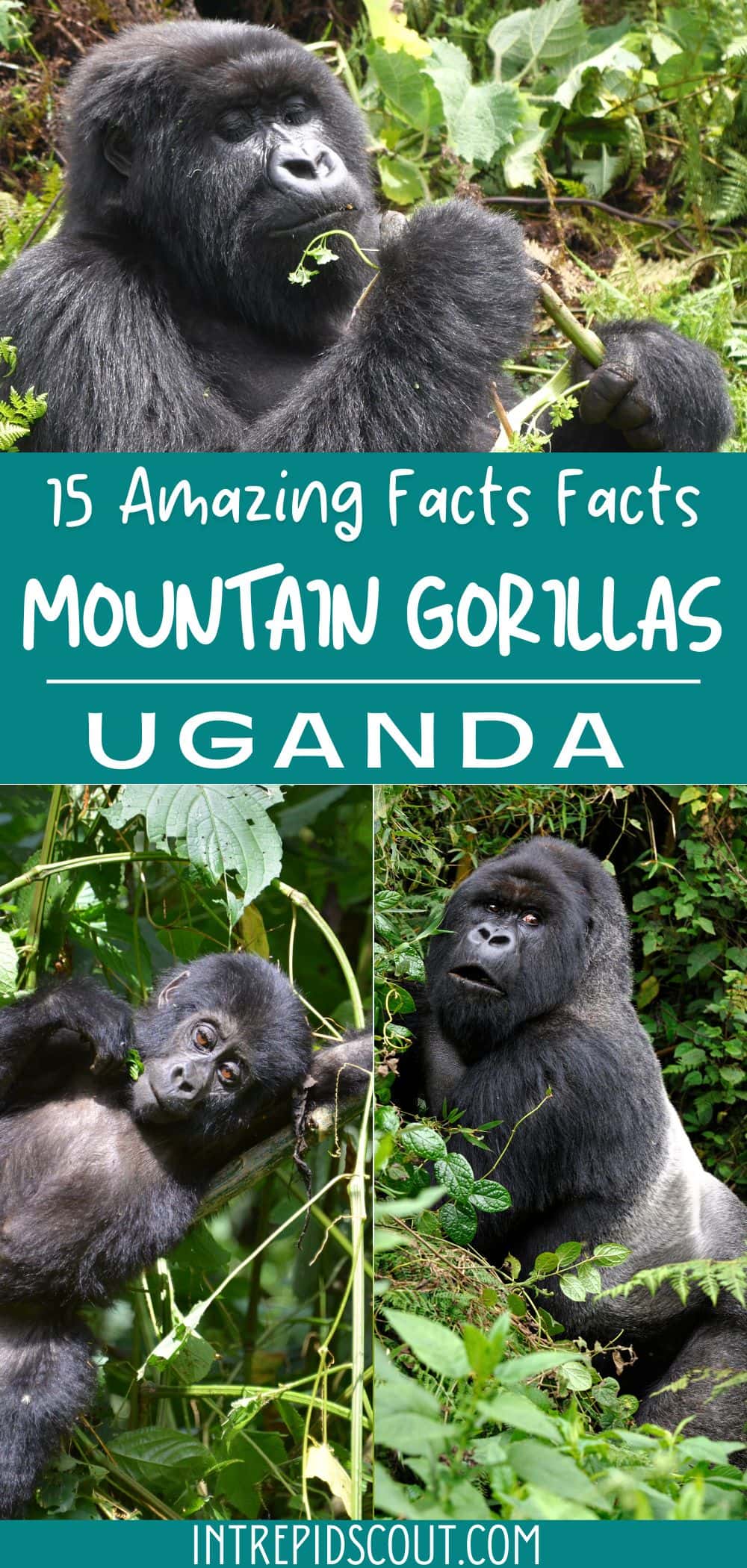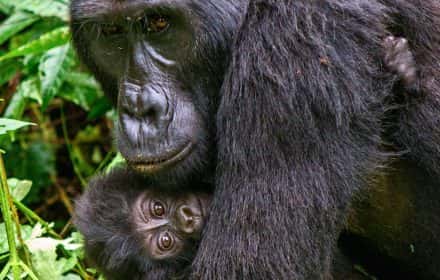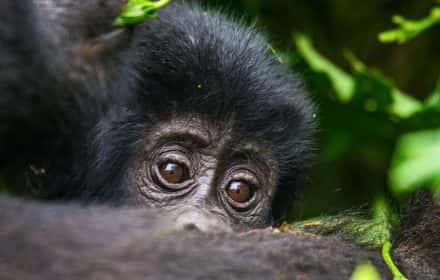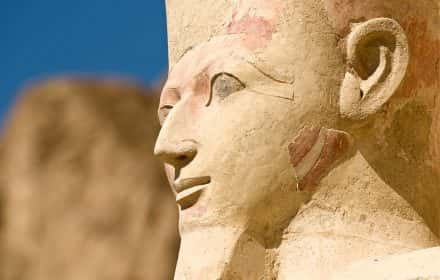This site uses affiliate links, meaning that if you make a purchase through our links, we may earn an affiliate commission.
Gorillas fascinate us with their human-like features and behaviors. Our enchantment with them is endless… If you are planning a gorilla trek in Uganda, it will be a life-changing experience.
Here are some amazing facts about mountain gorillas in Uganda that you will find helpful before embarking on an exciting trek to see the mountain gorillas in the wild.
- 1. 15 Amazing Facts About Mountain Gorillas in Uganda
-
- 1.1. There Are Two Gorilla Species in the World
- 1.2. Mountain Gorillas are Endangered
- 1.3. Mountain Gorillas Can Be Found in Only Two Places
- 1.4. Gene Analysis Indicates That Humans and Gorillas Differ by Only 1.6%
- 1.5. Gorillas Are the Largest of All Primates
- 1.6. Mountain Gorillas Get Sick
- 1.7. Mountain Gorillas Can Live to Be Over 40 Years Old in the Wild
- 1.8. Mountain Gorillas are Primarily Herbivorous
- 1.9. Mountain Gorillas Communicate with Each Other
- 1.10. Mountain Gorillas Have a Specific Appearance
- 1.11. Mountain Gorillas Have Night Routines
- 1.12. Mountain Gorillas Live in Family Groups
- 1.13. Their Facial Expressions Resemble That of Humans
- 1.14. Mountain Gorillas Have A Complex Social Behavior
- 1.15. Baby Gorillas Grow Very Fast
- 2. Intrepid Scout's Final Thoughts About Mountain Gorillas in Uganda
15 Amazing Facts About Mountain Gorillas in Uganda
There Are Two Gorilla Species in the World
There are two species of gorillas in the world: the eastern gorilla and the western gorilla.
They both contain two subspecies:
- The eastern gorilla species consists of the Mountain gorilla and the Eastern Lowland gorilla.
- The western gorilla species consists of the Cross River gorilla and the Western Lowland gorilla.
Let’s take a look at each subspecies:
- Cross River gorillas – are scattered across the forests and rainforests of Cameroon and Nigeria, an area of about 3,000 square miles. The region that they live in is heavily populated by humans who clear these forests for timber and create fields for agriculture and livestock. Poaching also occurs in the forests, which contributes to their already small population of 200-300 individuals. They are currently critically endangered.
- Mountain gorillas – live in forests at elevations from 8,000 to 13,000 feet. They reside in the Virunga Mountains, which borders the Democratic Republic of Congo, Rwanda, and Uganda, and Bwindi Impenetrable National Park, Uganda, which connects to Sarambwe Nature Reserve, DRC.
- Western Lowland gorillas – are the most abundant of all gorilla subspecies. They are found throughout the region from Cameroon to the Republic of Congo. The number of these gorillas is not known because there are some that live deep in the rainforests of Africa, however, most live in isolated swamps and in the Republic of Congo. Compared to other subspecies, they are smaller and have brown-grey coats and auburn chests, wider skulls, and smaller ears. Due to poaching, their population has decreased its numbers by more than 60% within the last 20-25 years. They are considered critically endangered as well.
- Eastern Lowland gorillas – live in the tropical rainforests of the Democratic Republic of Congo. In the last 50 years, their historical range has decreased from 8,1000 square miles to about 5,600 square miles. They only occupy about 13% of their original range, as the population declined more than 50% since the mid-1990s. Like the other subspecies, they are considered critically endangered.
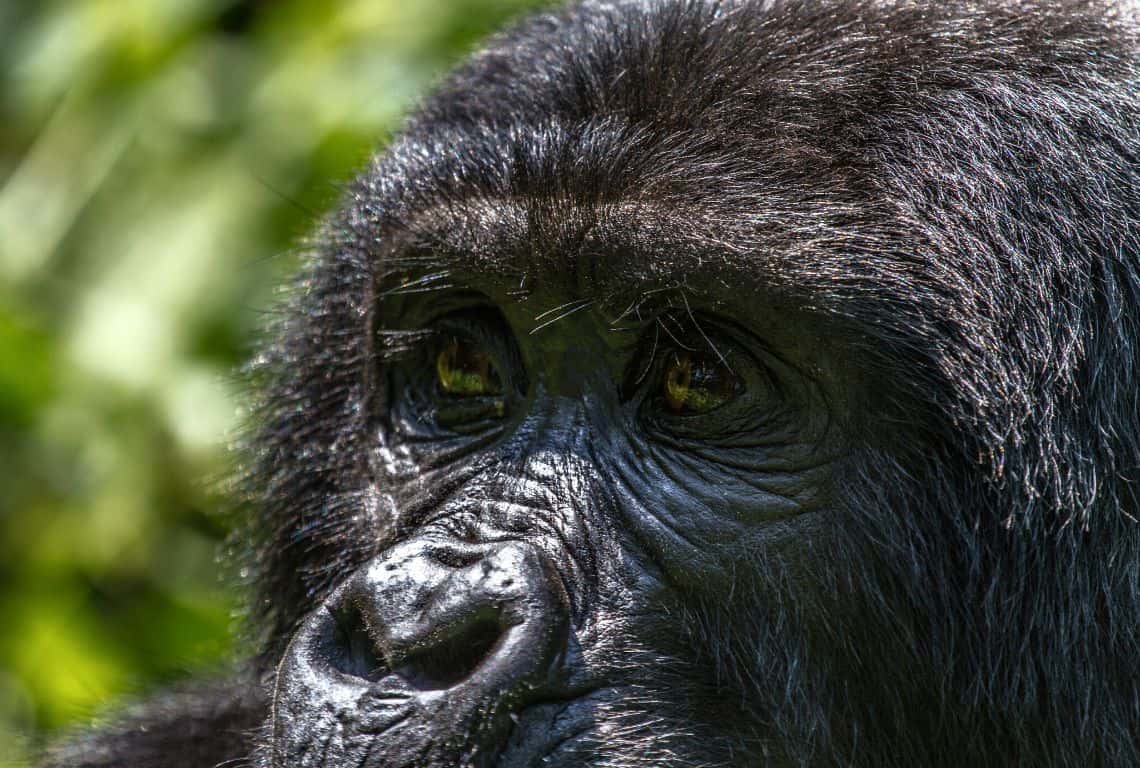
There Are Two Gorilla Species in the World / Facts About Mountian Gorillas in Uganda
Mountain Gorillas are Endangered
Mountain gorillas are endangered. There are an estimated 1,063 in the wild according to the latest census results (which come out every 5-10 years).
The main threats to gorilla populations today are habitat loss, poaching, disease transmission from humans, and civil wars and political unrest.
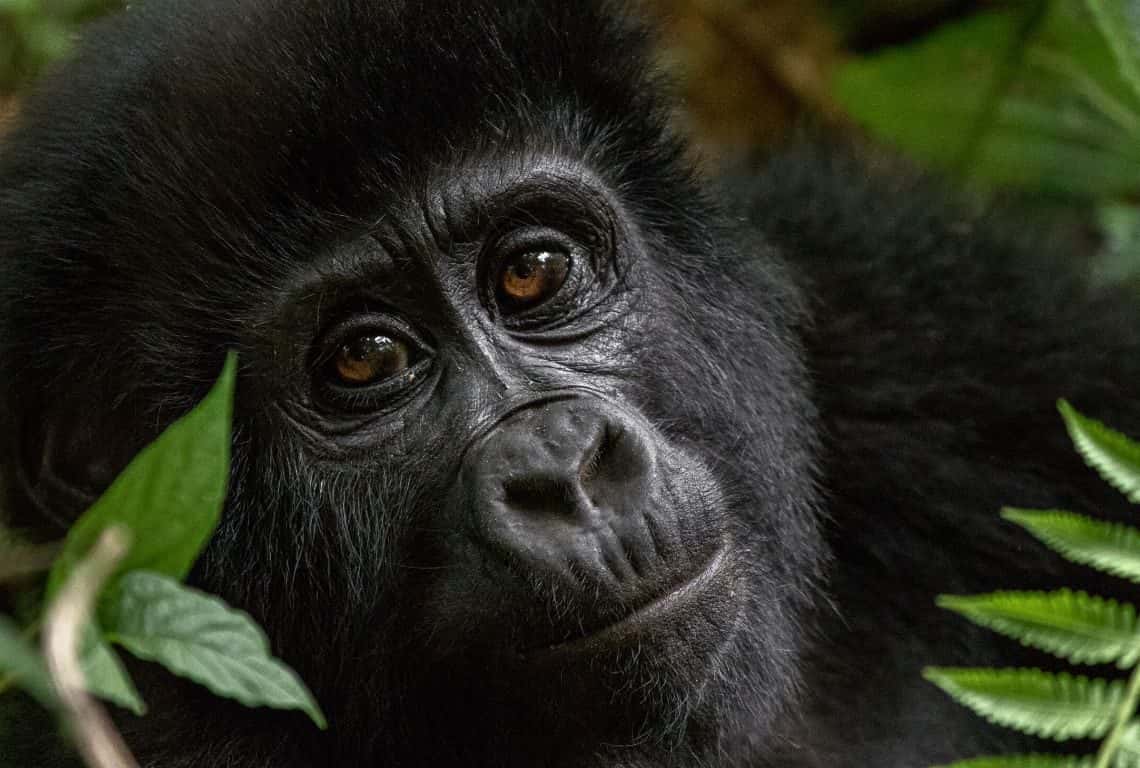
Mountain Gorillas are Endangered / Facts About Mountian Gorillas
Mountain Gorillas Can Be Found in Only Two Places
Mountain gorillas can be found in just two places in east-central Africa:
- The Virunga Volcanoes (a region spanning 3 national parks in Uganda, Rwanda, and the Democratic Republic of Congo (DRC))
- Bwindi Impenetrable National Park, Uganda, which connects to Sarambwe Nature Reserve, DRC
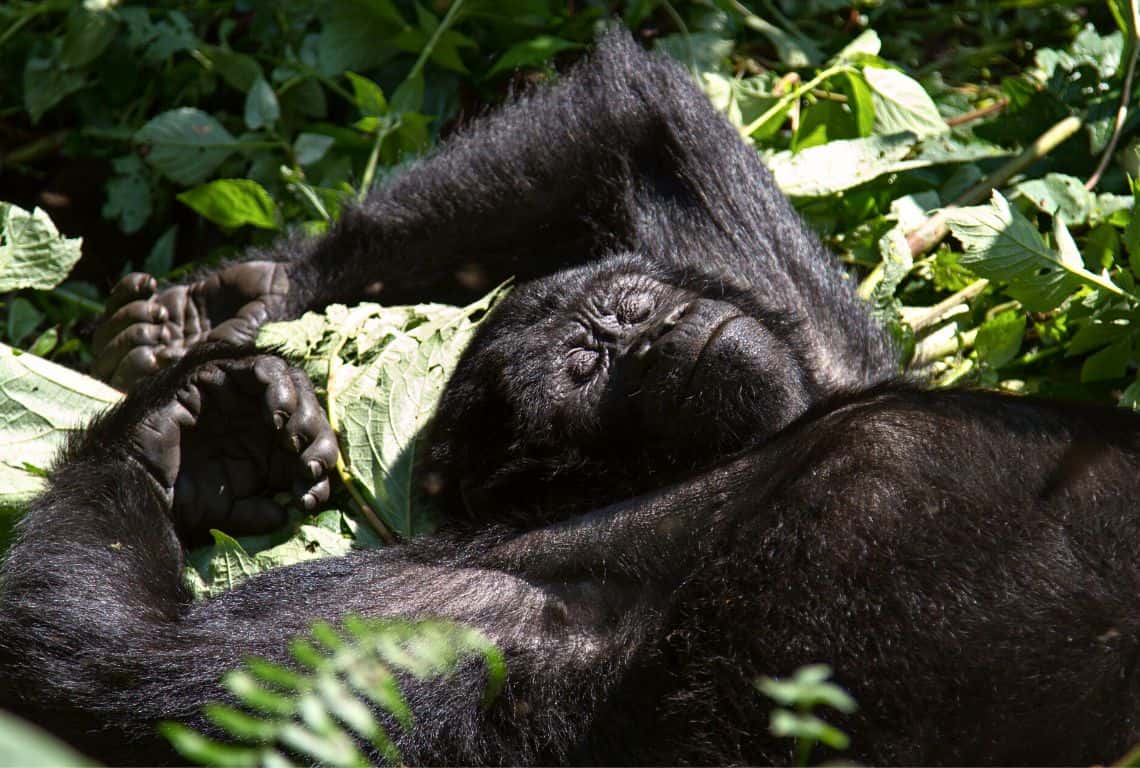
Mountain Gorillas Can Be Found in Only Two Places / Facts About Mountain Gorillas
Gene Analysis Indicates That Humans and Gorillas Differ by Only 1.6%
The gene analysis between humans and gorillas indicates that men and gorillas differ by only 1.6%. Interestingly, the gene analysis between men and chimpanzees differs by 1.2%.
However, it should be noted that despite the closeness of the chimpanzees to humans, the gorillas resemble humans in a wider range of aspects. For example, the feet of gorillas resemble those of men and are more suited for walking since they spend most of their time on the ground.
Exposure to human illnesses can have potentially detrimental impacts on gorillas as they are so genetically similar to us.
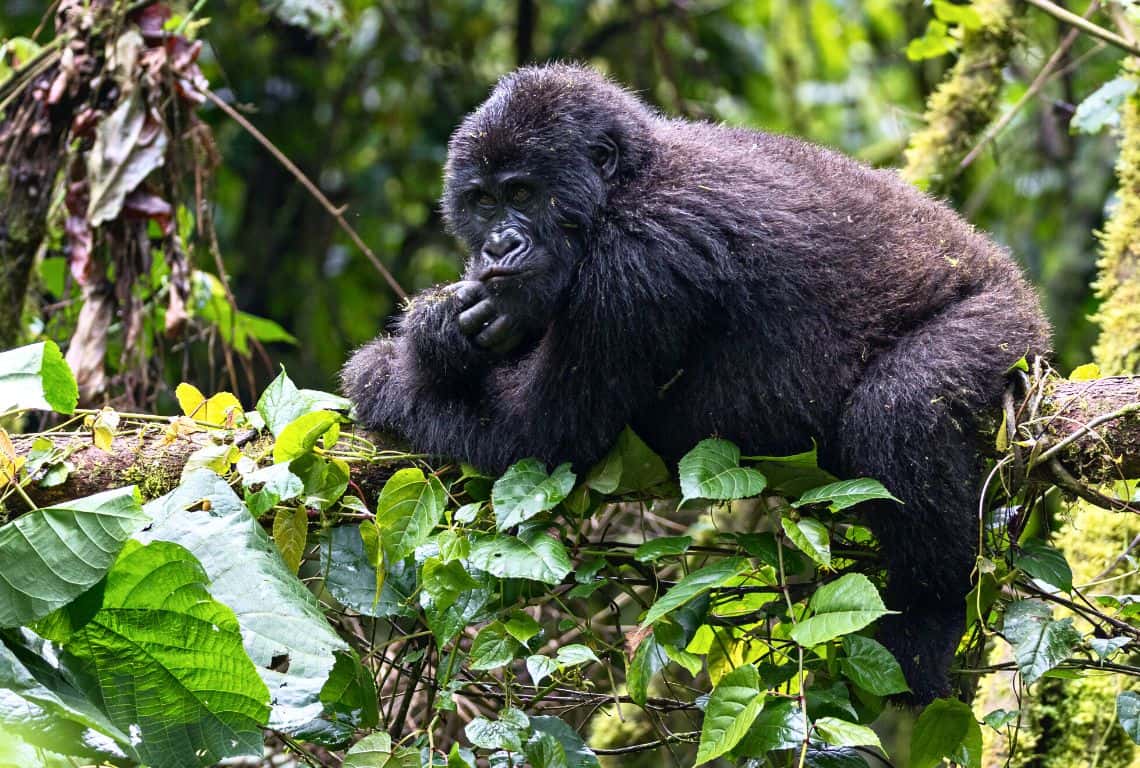
Gene Analysis Indicates That Men and Gorillas Differ by Only 1.6% / Facts About Mountian Gorillas
If you are planning on gorilla trekking in Uganda, make a note that once you reach your gorilla family, you will need to maintain a distance of at least 10 meters (32 feet) and you will be asked to wear a mask. Prior to embarking on a gorilla trek, your temperature will be checked and you will be asked to sanitize your hands.
Gorillas Are the Largest of All Primates
Gorillas are the largest of all primates.
- Western Lowland adult male gorillas are about 1.7 m (66.9 in.) in body length and weigh about 169.5 kg (374 lbs.). Adult females are about 1.5 m (59.1 in.) in body length and weigh about 71.5 kg (158 lbs.).
- Adult male Mountain gorillas may weigh up to 220 kg (484 lbs.) and females weigh about 97.7 kg (215 lbs.).
- Cross River gorillas have been difficult to study due to their shy nature. However, it is estimated that an adult male weighs about 180 kg (396 lbs.).
- Eastern Lowland gorillas are slightly larger than the western species, with adult males weighing up to 220 kg (484 lbs.) and females weighing about 80 kg (176 lbs.).
Mountain Gorillas Get Sick
- Mountain gorillas live in wet and cold habitats which contributes to their developing respiratory tract diseases. Runny nose, coughing, and fever are some of the common symptoms. Most gorillas with the respiratory disease recover on their own, but others deteriorate and develop secondary bacterial infections, causing even more severe respiratory diseases, like bronchopneumonia, which can be fatal.
- Mountain gorillas rarely develop teeth cavities compared to their other counterparts, since they do not consume much fruit (sugar). However, they do suffer from tartar buildup which causes periodontitis which leads to the loss of teeth.
- Mountain gorillas suffer from intestinal parasites.
- The malaria parasites also have got an effect on gorillas however they are different species than those that cause sickness in humans.
- Ebola is a big threat to gorillas as it can be transferred from humans to gorillas.
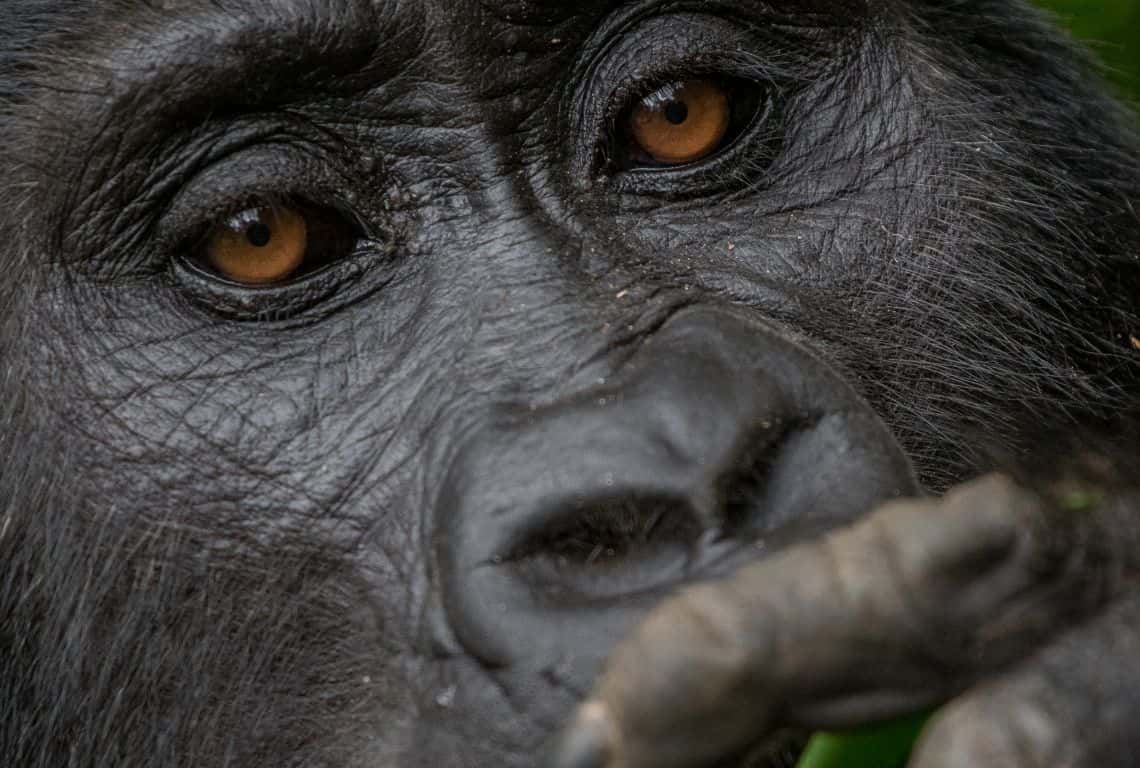
Mountain Gorillas Get Sick / Facts About Mountain Gorillas in Uganda
- Rope and wire snares set by poachers pose a great threat to the gorillas. In general, poachers set snares to catch antelope and other forest animals in order to feed their families. Unfortunately, gorillas, especially infants and juveniles, sometimes get caught in these snares. Gorillas may lose limbs or digits to snares or die as a result of infection or strangulation. Source: Gorilla Doctors
- Physical injury or trauma is the leading cause of death in mountain gorillas. Trauma can be human-induced (such as injuries caused by snares), the result of accidents, or caused by other gorillas. When taking over a group or acquiring new females, silverbacks sometimes commit infanticide on the other male’s infants, so that their mothers will start reproductively cycling again, enabling the new males to father their own offspring with the females. Silverbacks and blackbacks, with their long, sharp canine teeth, can inflict serious injuries when fighting with each other for dominance. Occasionally, adult females and youngsters get caught in the middle of fights and are injured. Source: Gorilla Doctors
Mountain Gorillas Can Live to Be Over 40 Years Old in the Wild
Mountain gorillas can live to be over 40 years old in the wild.
- They are classified as infants until they reach around three-and-a-half years old, and adults from around 8 years.
- Males between 8-12 years are called blackbacks.
- At about 12 years old, males develop a silver-grey saddle across their back section and hips, earning them the name silverbacks. This silver-gray area breaks up their overall dark coloration, creating an optical illusion of increased length and larger size.
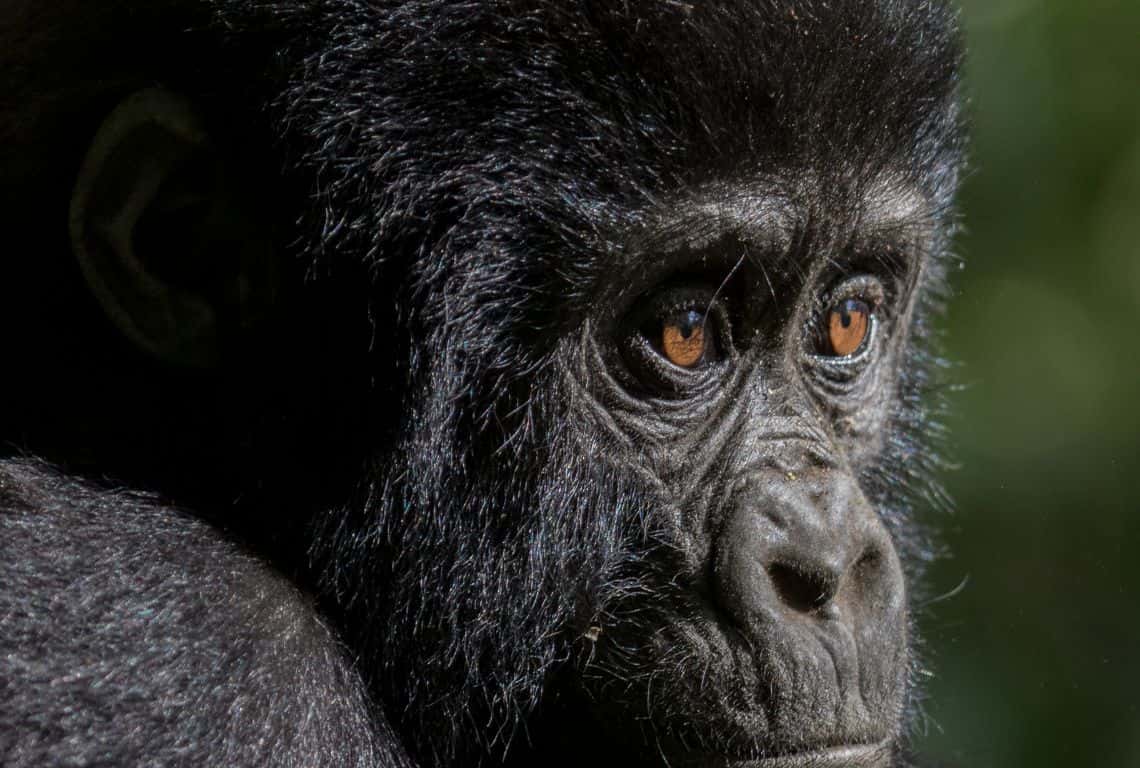
Mountain Gorillas Can Live to Be Over 40 Years Old in the Wild / Facts About Mountain Gorillas
Mountain Gorillas are Primarily Herbivorous
Gorillas are primarily herbivorous, which means that they feed on plants. However, they will also eat insects
Their diet might include leaves, stems, shoots, fruit, flowers, bark, herbs, ants, snails, termites, and rotting wood which is a good source of sodium.
Mountain gorillas will forage for food in the morning, then rest around midday, and forages again in the afternoon before finally retiring for the night.
A mature gorilla male will consume about 30 kg of plants daily, while a mature gorilla female will consume about 18 kg.
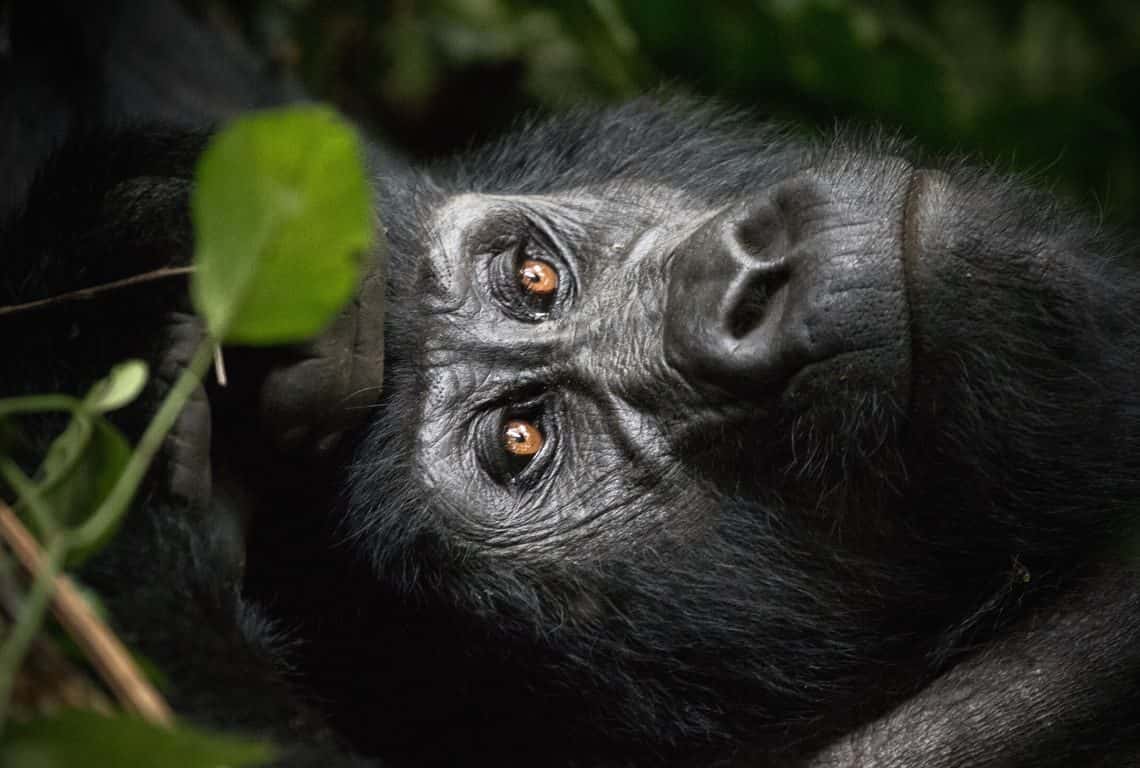
Mountain Gorillas are Primarily Herbivorous / Facts About Mountain Gorillas
Mountain Gorillas Communicate with Each Other
It is estimated that gorillas have at least 22 distinct sounds used for communication.
They frequently grunt towards the end of their midday nap session as if to communicate their rest period is about to end.
They produce short barks when they are mildly alarmed or curious.
To intimidate rivals, male gorillas strut with stiff legs, beat their chests, and use vocalizations like roars or hoots.
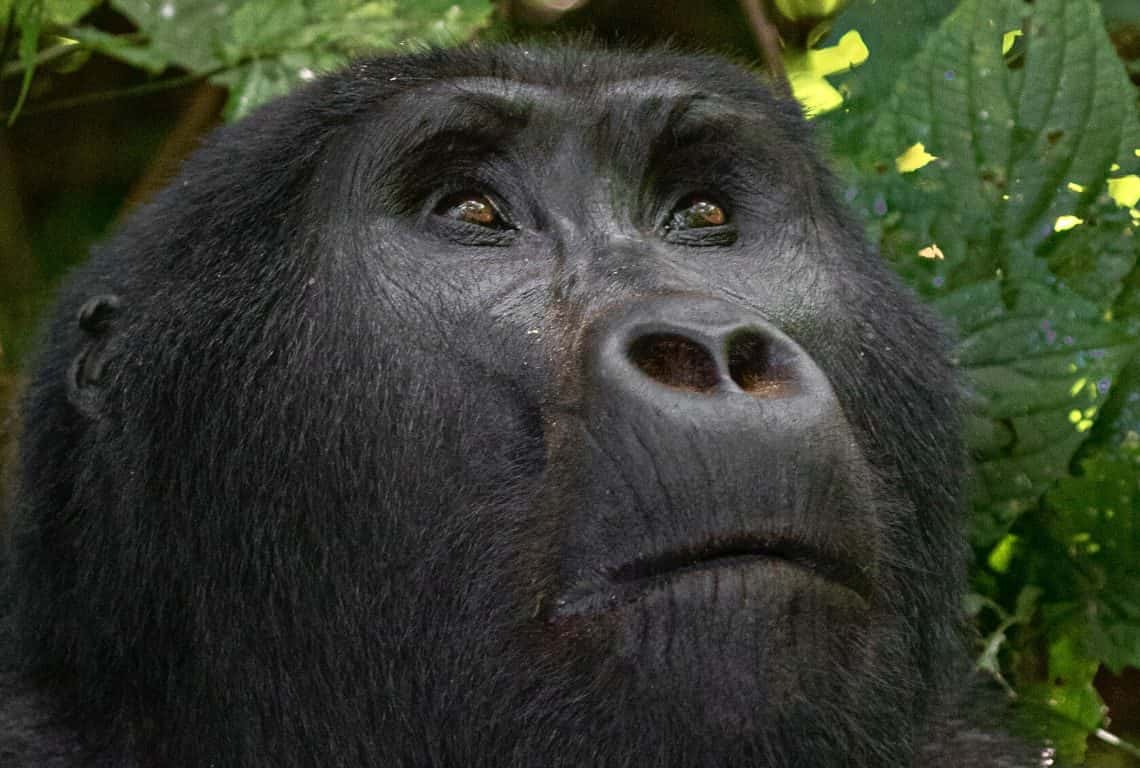
Mountain Gorillas Communicate with Each Other / Facts About Mountain Gorillas
Mountain Gorillas Have a Specific Appearance
- Mountain gorilla fur tends to be thicker and longer than that of other gorilla species which allows them to thrive in colder temperatures.
- Mountain gorillas have unique patterns of wrinkles on their nose which differentiate them from each other.
- The head of a gorilla is massive, with a bulging forehead overhanging the eyes. Male gorillas have noticeable bony crests which appear on top and the at the back of their skulls making their head look like a cone.
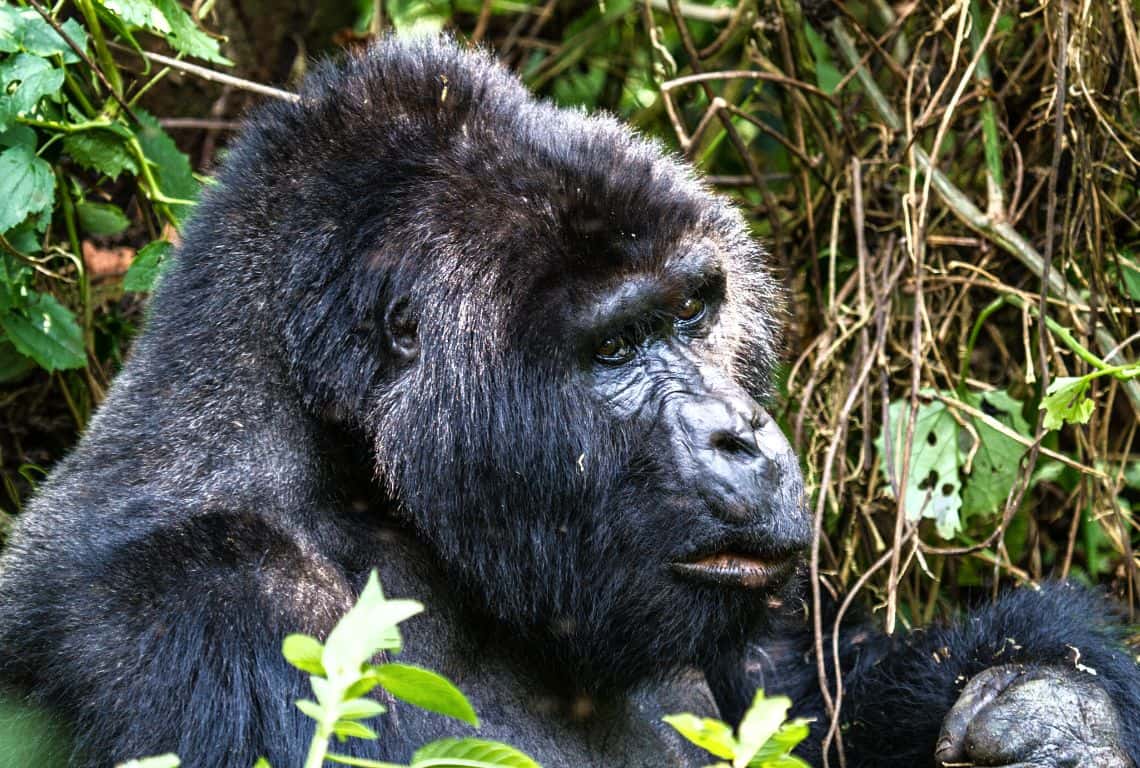
Mountain Gorillas Have a Specific Appearance / Amazing Facts About Mountain Gorillas in Uganda
Mountain Gorillas Have Night Routines
Mountain gorillas construct new nests every evening. Even though they do not transgress huge distances foraging for food and they are never far away from the previous night’s nests, they build new nests every evening.
Baby gorillas usually share the nest with their mothers staying safe and warm. However, once their mom has another infant, usually after four years, young gorillas will start to sleep on their own. Prior to that age, they often will practice building nests during the day.
At night, the entire family sleeps close together either in the nests constructed on the ground or in the trees.
Gorillas usually start making their nests about an hour before the sun sets, in time to be in bed by dark! They typically stay in their nest the entire night, just like people. However, gorillas sleep longer than humans, averaging about 12 hours of rest each night!
Amazing Facts About Mountain Gorillas in Uganda
Mountain Gorillas Live in Family Groups
Gorillas are non-territorial and live in groups called troops that generally consist of 1 to 4 adult males (silverbacks), some juvenile males (blackbacks), and several adult females, and young.
The oldest and strongest adult male silverback is usually dominant in the troop and has exclusive breeding rights to the females.
Adolescent females transfer to another troop before reproducing at around 8 years of age.
Generally, the first troop a female reproduces in will become her permanent family.
A female’s status or rank in the family is generally determined by the order in which she was recruited into the troop. Late arrivals do not receive the benefits of high-ranking females such as having their offspring remain close to the dominant silverback for protection. For this reason, females most often join a lone silverback or a newly formed troop rather than a long-established one.
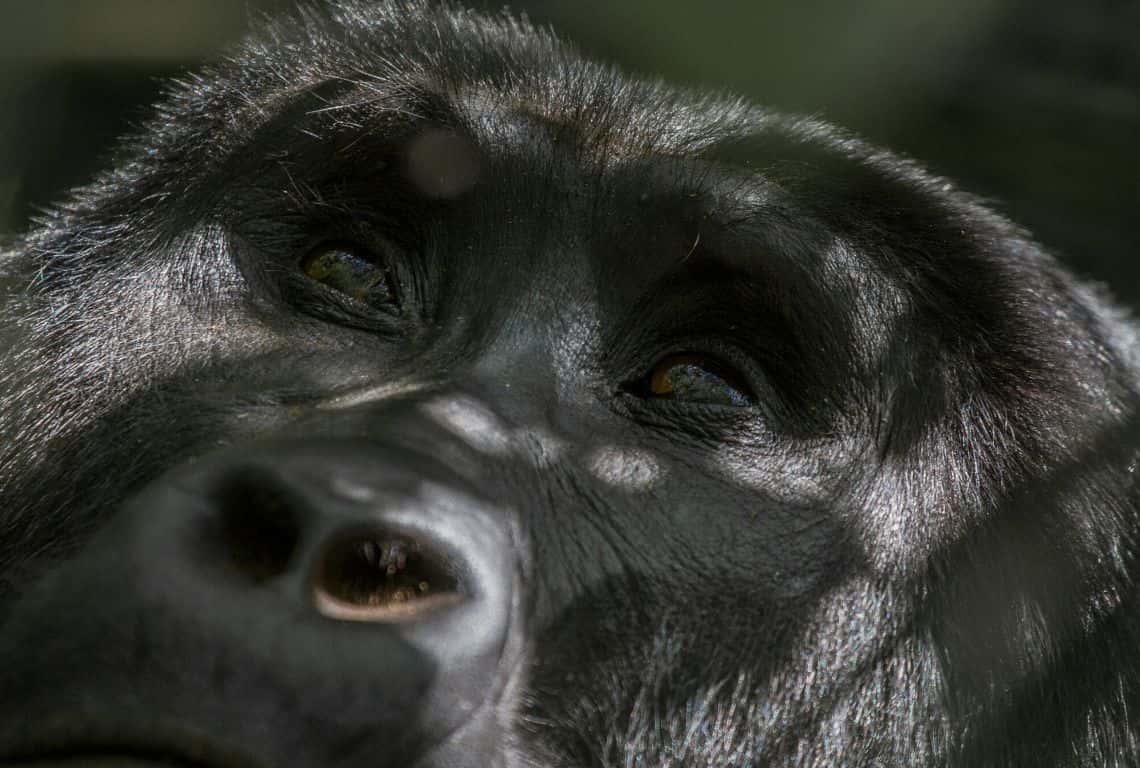
Mountain Gorillas Live in Family Groups / Facts About Mountain Gorillas in Uganda
Their Facial Expressions Resemble That of Humans
We are fascinated by their facial expressions which are very similar to humans.
- Aggression is often displayed by a stern, fixed stare with lips pressed tightly together.
- Fearful displays are made with an open mouth and exposed canines and their eyes shift nervously.
- Playful displays are done open-mouthed with no teeth showing and relaxed eyes.
Gorillas do not like being directly stared at. Direct eye contact is a sign of aggression.
They have forward-facing eyes (overlapping fields of vision) which increases their visual acuity for depth perception.
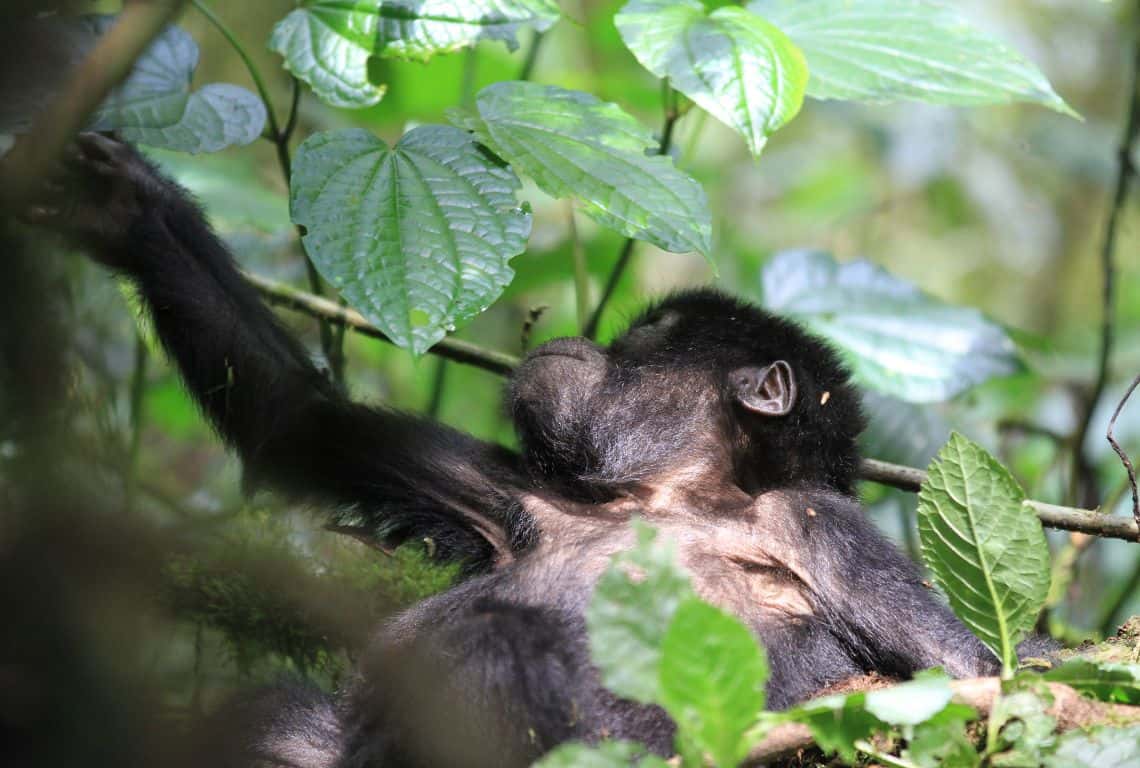
Their Facial Expressions Resemble That of Humans / Facts About Mountain Gorillas in Uganda
Mountain Gorillas Have A Complex Social Behavior
- Silverbacks are typically more aggressive than other group members since the troop’s safety is their responsibility. The silverback makes all group decisions, is responsible for most of the calls, receives the dominant portion of food (even when resources are limited), and can terminate troublesome behavior with just a look.
- When in a threatening situation, the silverback will ferociously beat its chest, produce loud scowling vocalizations and a pungent odor (which humans can detect from over 25 yards away), throw vegetation, and charge at its opponent or intruder. Researchers have discovered that 99% of their charges are bluffs; providing the rest of the troop time for retreating to a safe distance. However, if pressed, the silverback will follow through with his threat.
- A gorilla male must have an established home range and great strength to confront any rival before acquiring his own troop. Therefore most silverbacks are usually solitary for about 4 years and turn 15 before acquiring a troop of their own.
- Adult females are not bonded to one another and usually compete to groom and stay close to the silverback. Mothers are closely bonded to their offspring for the first three years of life.
- Competition for adult females is high and will often result in aggressive interactions between a dominant and rival silverback who is looking to either start or expand a troop. These confrontations may intermittently last for days and involve all the troop members.
- Gorillas will give each other nose-to-nose greetings and gestures of reassurance such as embracing or touching.
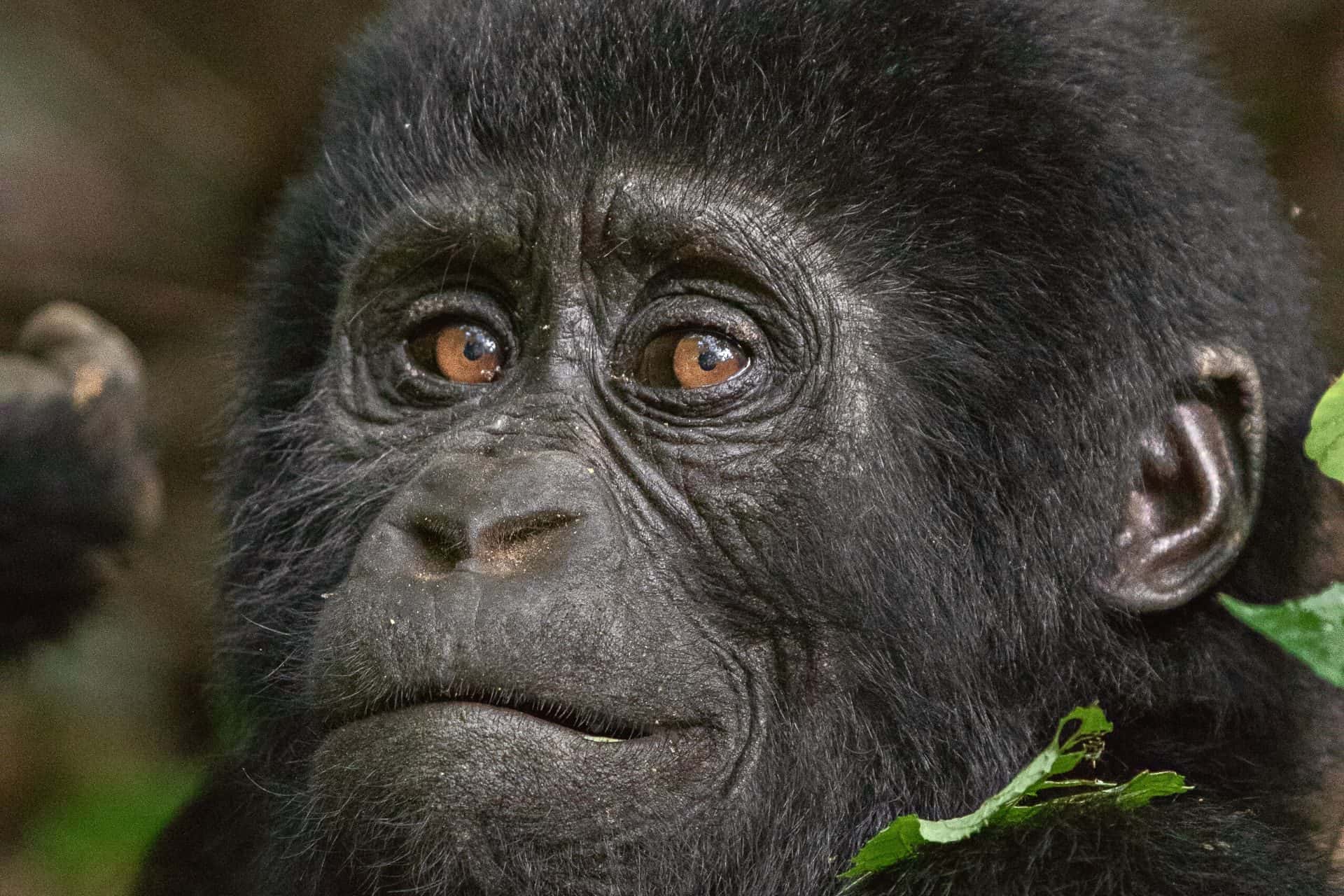
Mountain Gorillas Have A Complex Social Behavior / Facts About Mountain Gorillas in Uganda
Baby Gorillas Grow Very Fast
- Gorilla newborns usually weigh about 2 kg (4.5 lbs.) with pale gray-pink skin that is sparsely covered with hair.
- They are able to cling to their mothers with a very powerful grip from both their hands and feet. The female will initially assist the infant when it is holding on to her chest or stomach.
- They are in almost constant contact with their mothers for the first 6 months and nurse for about 2.5 to 3 years.
- Baby gorillas grow and develop much quicker than human babies. They usually begin playing, smiling, and bouncing at 8 weeks.
- At about 9 weeks they begin crawling.
- Exploration of their environment and object manipulation begins around 3 months of age.
- They are able to stand at 20 weeks and at 34 weeks they are usually walking and traveling short distances from their mothers.
- Around 6 to 7 months of age, the infants are able to climb on their mothers’ backs and ride.
- Babies will begin eating some vegetation at around 2.5 months and make it the majority of their diet by 6 to 7 months.
- Males and females look very similar during their juvenile (3-6) and adolescent (6-8) years. However, when males mature into their blackblack period, they are taller and begin developing adult male characteristics. The silvering of hair on the back begins at around 13 years of age.
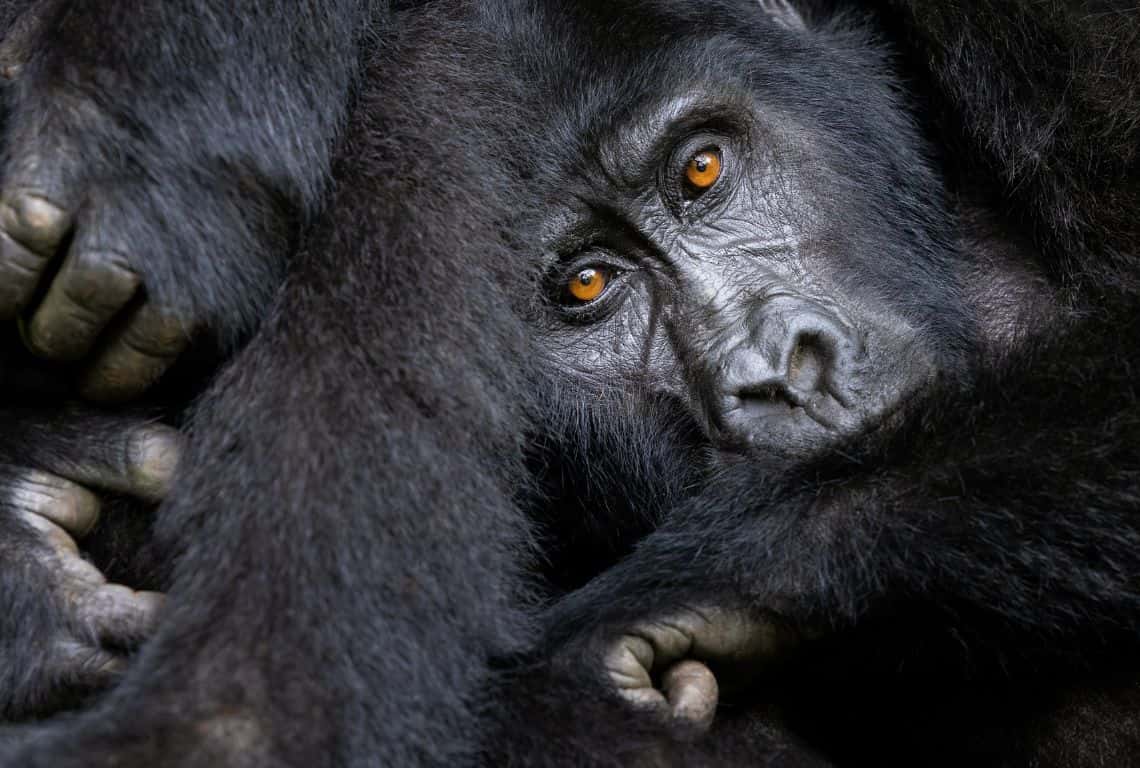
Baby Gorillas Grow Very Fast / Facts About Mountain Gorillas in Uganda
Intrepid Scout's Final Thoughts About Mountain Gorillas in Uganda
- Doing the mountain gorilla trek in Uganda ranks at the top of my world travel chart. It is an experience I will cherish for the rest of my life.
- The main threat to mountain gorillas is the degradation of their habitat.
- As the region’s population grows, the land is increasingly converted for agriculture, and competition for limited natural resources leads to deforestation.
- With little other choice, people enter mountain gorilla forests to collect water and firewood, putting gorillas at risk of human contact and illnesses.
- People may also lay snares intended for bushmeat, which can accidentally injure the great apes.
- Gorillas don’t just stay in their forests. They venture onto farmland to eat crops like maize and bananas, which can cause conflict with people who need to make a living.
- Gorilla tourism that is not well managed is another potential issue, as it can impact the behavior and health of mountain gorillas.
More Helpful Posts About Uganda:
Now, It Is Your Turn, I Would Like to Hear Back from You!
Are you planning your trip to Uganga?
Please let me know! Drop me a quick comment right below!
Did You Find This Post Useful?
Why Not Save Amazing Facts About Mountain Gorillas in Uganda to Your Pinterest Board!
